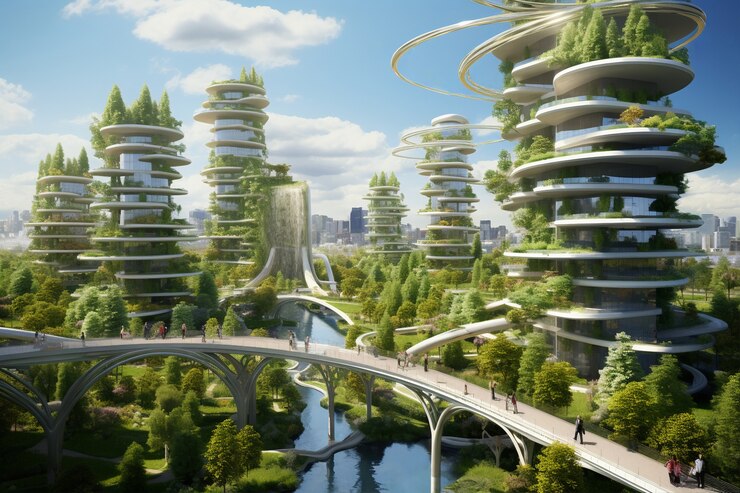In a world increasingly conscious of its environmental footprint, a new material is making waves—phaeloed. This innovative substance promises to revolutionize eco-friendly living, offering a sustainable alternative for various applications. But what exactly is phaeloed, and how can it contribute to a greener planet? Let’s explore this groundbreaking material in detail.
Introduction to Phaeloed: What it Is and How It’s Changing Eco-Friendly Living
Phaeloed is a versatile, biodegradable material derived from renewable resources. Unlike traditional plastics, phaeloed decomposes naturally, leaving no harmful residues behind. Its unique properties make it suitable for a wide range of uses, from packaging to textiles.
The growing interest in phaeloed stems from its potential to reduce reliance on fossil fuels and minimize waste. For eco-conscious consumers, incorporating phaeloed into daily life means making a tangible impact on the environment. This blog post will guide you through the various aspects of phaeloed, its benefits, challenges, and future prospects.
The Environmental Impact of Phaeloed: A Deep Dive into Its Benefits
Phaeloed stands out for its minimal environmental impact. Traditional plastics take hundreds of years to decompose, releasing toxic substances in the process. Phaeloed, on the other hand, breaks down within months, significantly reducing pollution.
One of the key benefits of phaeloed is its carbon footprint. Production requires less energy compared to conventional plastics, resulting in lower greenhouse gas emissions. This makes phaeloed an attractive option for industries looking to cut their carbon output.
Additionally, phaeloed is sourced from renewable materials, such as plant fibers, which can be replenished over time. This contrasts sharply with petroleum-based plastics, which deplete non-renewable resources. By choosing phaeloed, consumers can support a more sustainable lifecycle for everyday products.
Phaeloed in Everyday Life: Practical Uses and Applications
The versatility of phaeloed opens up numerous possibilities for its use. In the packaging industry, it offers an eco-friendly alternative to plastic wraps and containers. Companies are already adopting phaeloed for its protective yet biodegradable qualities.
In the fashion world, phaeloed is making its mark through sustainable textiles. Designers are creating clothing and accessories that not only look good but also contribute to environmental preservation. Imagine wearing a stylish jacket that decomposes safely at the end of its life cycle.
Another exciting application is in home goods. From utensils to furniture, products made with phaeloed combine durability with sustainability. This means consumers can enjoy high-quality items without compromising their eco-friendly values.
Sourcing Phaeloed Sustainably: Ethical Production and Supply Chain
Sustainable sourcing is crucial to realizing the full potential of phaeloed. Ethical production practices ensure that the raw materials used do not harm ecosystems or exploit workers. Transparency in the supply chain is essential for maintaining consumer trust.
Producers of phaeloed are committed to fair labor practices and environmentally friendly harvesting methods. By supporting these ethical producers, consumers can feel confident that their choices contribute to global sustainability efforts.
Furthermore, sustainable sourcing involves minimizing waste throughout the production process. This includes utilizing by-products and ensuring that every step from raw material extraction to final product manufacturing is optimized for efficiency and minimal environmental impact.
Challenges and Misconceptions: Addressing Common Concerns
Despite its many advantages, phaeloed is not without challenges. One common misconception is that biodegradable materials like phaeloed can’t be as durable as traditional plastics. However, advancements in technology are proving otherwise, with many phaeloed products matching or even surpassing the durability of their conventional counterparts.
Another concern is the cost. While phaeloed may be more expensive to produce initially, economies of scale and ongoing research are driving prices down. Over time, as demand increases, the cost gap between phaeloed and traditional materials is expected to narrow.
Education is key to overcoming these challenges. By informing consumers about the benefits and debunking myths, we can encourage wider adoption of phaeloed, leading to greater environmental benefits.
The Future of Phaeloed: Innovations and Advancements
The future of phaeloed looks promising, with ongoing research and development paving the way for new applications and improved performance. Scientists are exploring ways to enhance the material’s properties, making it even more versatile and durable.
Innovations in production techniques are also on the horizon, aimed at reducing costs and increasing scalability. This will make phaeloed more accessible to a broader range of industries and consumers, furthering its impact on sustainable living.
Collaborations between researchers, manufacturers, and consumers will be crucial in driving these advancements. By working together, we can unlock the full potential of phaeloed and move towards a more sustainable future.
Conclusion
Phaeloed represents a significant step forward in eco-friendly living. Its environmental benefits, practical applications, and potential for future advancements make it a compelling choice for eco-conscious consumers. By understanding and adopting phaeloed, we can all contribute to a greener, more sustainable planet.
Ready to make a positive change? Explore how phaeloed can fit into your lifestyle and join the movement towards a more sustainable future. Stay informed, stay engaged, and let’s make a difference together.

